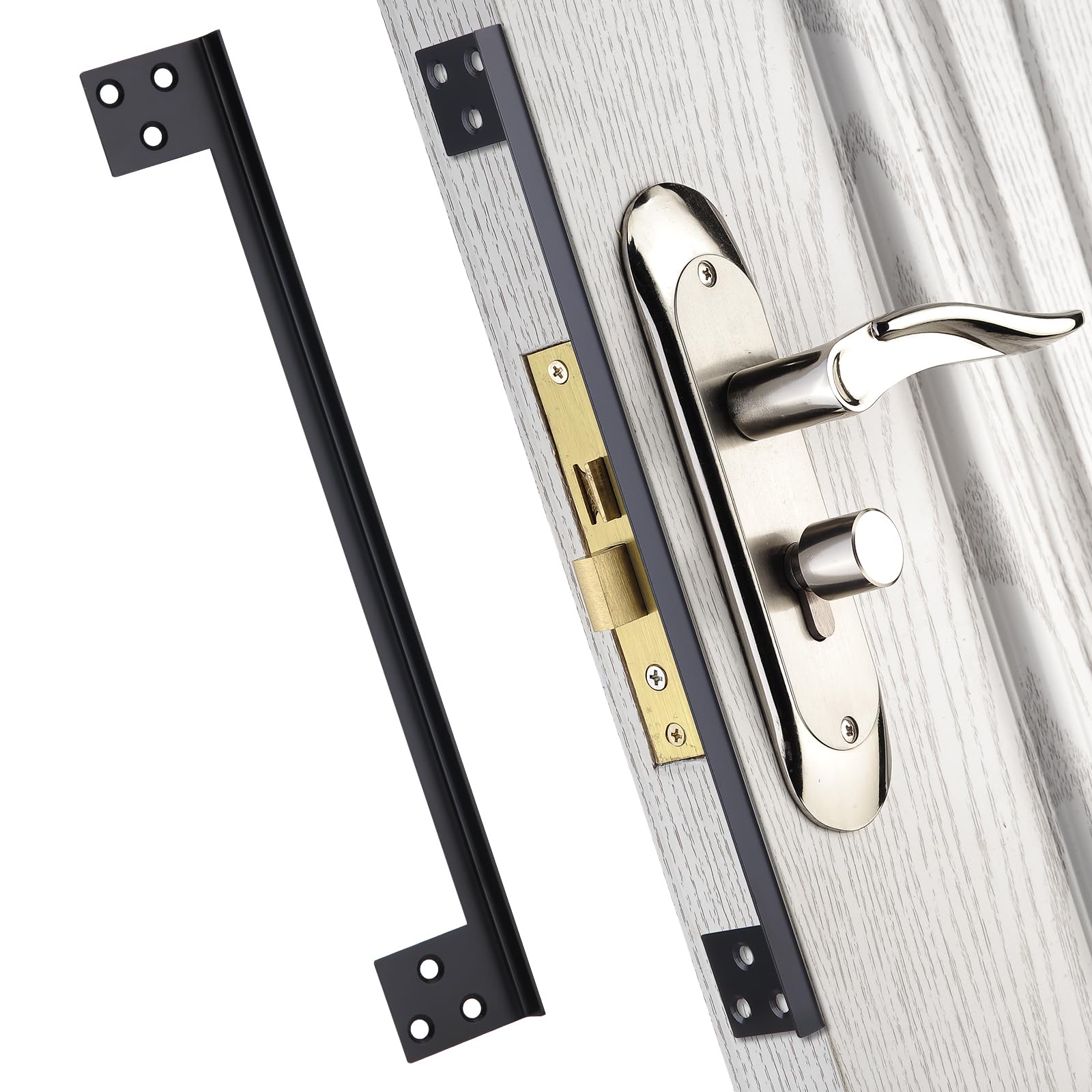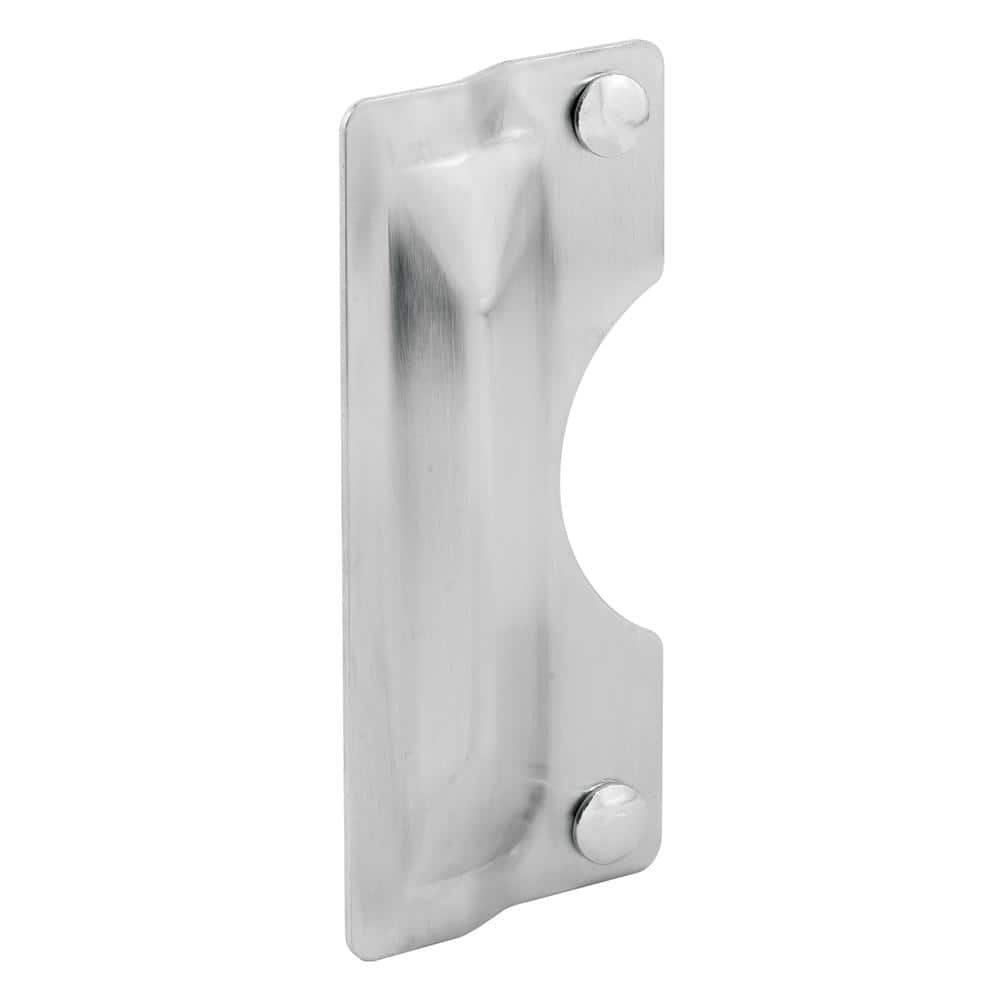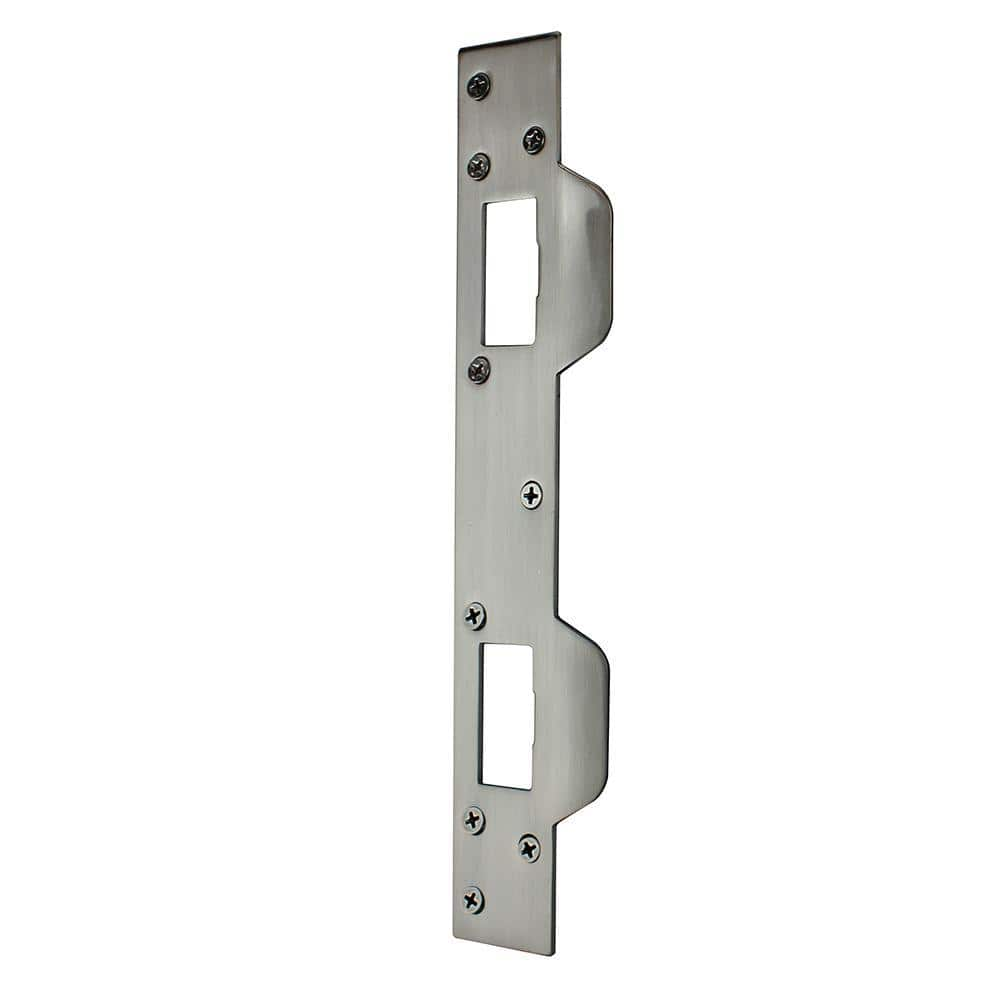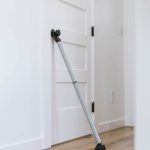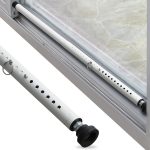What is a Door Security Plate?
A door security plate is a metal plate. You fix it to a door’s frame. It helps to protect the door from forced entry. This plate reinforces the door where the lock goes. It makes it harder for intruders to break in. The plate might cover the lock area, or it can extend to cover a wider area. It’s a key part of your door’s security hardware. Often, it is made from tough metals like steel or iron. They are durable and resist forceful attacks. Door security plates go by different names. Some call them strike plates or armor plates. They work with your locks to secure your door even better. In short, these plates boost the strength of your door. They make it tough for someone to kick or push your door open. That’s a quick overview of what a door security plate is.
Benefits of Installing a Door Security Plate
Installing a door security plate offers several advantages for your home safety. These metal plates enhance the security of your home by providing an extra layer of protection. Here are some key benefits:
- Increased Door Strength: A door security plate reinforces the area around the lock. This reinforcement makes your door more resistant to forced entries, like kicking or shoving.
- Deterrence of Intruders: The visible presence of a security plate can act as a deterrent to potential intruders. It signals that your home takes security seriously, making it a less attractive target.
- Long-Term Durability: Made from materials like steel or iron, door security plates are built to last. They can withstand wear and tear, providing long-lasting security for your home.
- Affordability: Compared to other security measures, a door security plate is a cost-effective option. It’s a small investment that can make a significant difference in your home’s security.
- Peace of Mind: Knowing your doors have additional protection can offer greater peace of mind. Whether you’re home or away, you can feel more confident about your home’s safety.
By investing in a door security plate, you enhance the integrity of your home’s entry points. Such a simple addition can have a substantial impact on your overall security strategy, making it a worthy consideration for any homeowner.
Types of Door Security Plates
When beefing up home security, selecting the right type of door security plate is critical. There are several to consider, each designed for different levels of protection and door types. Knowing the variations helps you choose the one that best suits your needs.
- Flat Plate Door Reinforcers: These are basic door security plates. They attach to the door’s surface around the lock. They deter forced entry and are a simple, cost-effective choice.
- Box Strike Plates: These are more advanced than flat plates. They wrap around the door jamb, adding extra strength. Box strike plates are great for doors that have already suffered damage.
- T-Strike Plates: Designed for doors with a T-lock mechanism, T-strike plates provide a precise fit for unique lock styles. They offer reliable protection and a seamless look.
- U-Strike Plates: These plates are shaped in a ‘U’ to fit around the lock, reinforcing both the lock and door jamb. Excellent for adding strength to areas worn from use.
- Extended Lip Strike Plates: If your door has a deeper set jamb or requires a wider plate due to a thicker door trim, this type is ideal. It extends further to cover more area.
- Electric Strike Plates: For homes with electronic access, electric strike plates integrate with your systems. They maintain security while allowing controlled access.
Each type serves a different function and provides varying levels of security. Evaluate your door’s current condition, the level of security desired, and potential threats before making a decision. Remember, the right door security plate acts as a first line of defense for your home.
How to Choose the Right Door Security Plate for Your Home
Choosing the right door security plate is vital for optimal home safety. Here’s a simple guide to help you make the best choice:
- Assess Your Door: Examine your door’s material, thickness, and current lock type. Consider the door’s age and any previous damage it may have sustained.
- Consider Security Level: Think about the crime rate in your area. A higher risk might call for a sturdier, more advanced option like an electric or box strike plate.
- Measure Correctly: Before buying, ensure you have the right measurements. Check the distance from the edge of the door to the center of the lock. Note the height and width needed for the plate to fit well.
- Match With Lock Type: If you have a specialty lock, like a T-lock, choose a matching T-strike plate. The right fit is crucial for the plate to function properly.
- Look for Quality Materials: Opt for plates made from strong metals like steel or iron. These materials offer better resistance against force.
- Mind Your Budget: While you shouldn’t skimp on security, pick a plate that offers good protection without breaking the bank.
- Seek Professional Advice: If unsure, consult a professional. They can recommend the best type based on your door’s specifics and security needs.
By considering these factors, you can select the door security plate that provides the best defense for your home. Always remember that your family’s safety is worth investing in quality and proper installation.
Installation Tips for Door Security Plates
Once you’ve chosen the right door security plate, the next step is installation. This process is straightforward, but it’s vital to get it right. Here are some tips to ensure proper installation of your door security plate:
- Check the Package Contents: Before starting, make sure you have all the necessary screws and parts. Your plate should come with instructions too.
- Align the Plate: Position the plate so it lines up with the door’s lock hole. It should sit flush against the door or frame.
- Mark Screw Holes: Use a pencil to mark where the screws will go. This helps you know where to drill without guessing.
- Drill Pilot Holes: Drilling small pilot holes first will make it easier to screw the plate in firmly.
- Secure the Plate: Use a screwdriver to fasten the plate with screws. Make sure it’s tight but don’t over-tighten, as this can strip the holes.
- Test the Lock: Once installed, check that your lock still functions smoothly with the new plate. If it sticks, adjust the plate accordingly.
Following these steps will help you ensure your door security plate is installed correctly. The right installation maximizes the strength and effectiveness of the plate, contributing significantly to your home’s overall security.
Common Mistakes to Avoid When Using Door Security Plates
Installing door security plates is a smart move for any homeowner wanting to bolster their home safety. However, it’s not always straightforward and some common mistakes can compromise the safety that door security plates provide. Here are some pitfalls to watch out for:
- Using the Wrong Type of Screws: Not all screws are equal. For installation, choose long screws that can anchor into the door frame, providing better resistance.
- Poor Alignment: The plate must align with the lock hole. Misalignment can cause issues with locking and can weaken the structure.
- Incorrect Sizing: Make sure the plate fits the door. A plate that’s too big or too small won’t provide the full range of protection.
- Over-tightening Screws: While screws should be secure, over-tightening can strip the holes and damage the door or frame. Tighten firmly, but carefully.
- Neglecting the Door Frame: Strong plates need a strong door frame. Reinforce the frame if it’s weak or damaged to ensure overall security.
- Skimping on Quality: Don’t choose a security plate based only on price. Higher-quality materials offer greater protection.
- Failing to Update: As locks upgrade, so should your plates. Outdated plates may not fit new locks properly.
It’s crucial to avoid these errors while installing your door security plate to ensure maximum effectiveness. Perfecting the installation process could be the deciding factor between a secure home and an accessible target for intrusion.
Enhancing Overall Door Security Beyond the Security Plate
After you install a door security plate, consider additional measures for even greater safety. Here’s how you can enhance overall door security:
- Upgrade Your Locks: Stronger locks, such as deadbolts, provide added security. Choose high-quality locks with a good reputation.
- Install a Door Viewer: A peephole or door viewer lets you see who is at the door before opening it. This simple measure adds to your security checklist.
- Use Door Alarms: Door alarms alert you to any unauthorized entry attempts. They are easy to install and act as an excellent deterrent for intruders.
- Implement a Door Brace: A door brace bars entry, even if a lock is compromised. It’s a sturdy addition that resists forced openings.
- Add Motion-Detecting Lights: Lights that detect motion illuminate your doorway when someone approaches. They discourage tampering and intrusion during the night.
- Check Window Locks: Ensure windows near doors are secure. Intruders might use these as alternate entry points if they can’t breach the door.
- Maintain the Surrounding Area: Keep the door’s surroundings clear from potential hiding spots. Trimmed bushes and visible entry points deter loitering and concealment.
Remember, layering multiple security features makes it harder for intruders to gain access. Combine these strategies with your door security plate for a well-rounded defense.
Maintenance and Care for Your Door Security Plate
Proper maintenance and care can extend the life of your door security plate. Here’s what you should do:
- Regular Checks: Inspect your door security plate often. Look for loose screws or signs of wear.
- Tighten Screws: If screws loosen over time, tighten them. Use a screwdriver to snug them up without overtightening.
- Clean Regularly: Wipe the plate with a damp cloth. This removes dirt and prevents rust on metal plates.
- Lubricate the Lock: If your plate includes moving parts like a lock, lubricate it. Use a graphite-based lubricant.
- Check Alignment: Ensure the plate hasn’t shifted. It should line up with the lock hole for smooth locking and unlocking.
- Avoid Harsh Chemicals: When cleaning, don’t use strong cleaners. They can damage the metal.
- Monitor for Rust: If you spot rust, address it immediately. Use a rust remover suitable for the material.
- Seek Professional Help: If you notice damage or issues, consult a locksmith. They can advise on repairs or replacements.
Taking care of your door security plate helps keep your home secure. Perform these simple tasks regularly, and your plate will continue to protect your home as intended.
